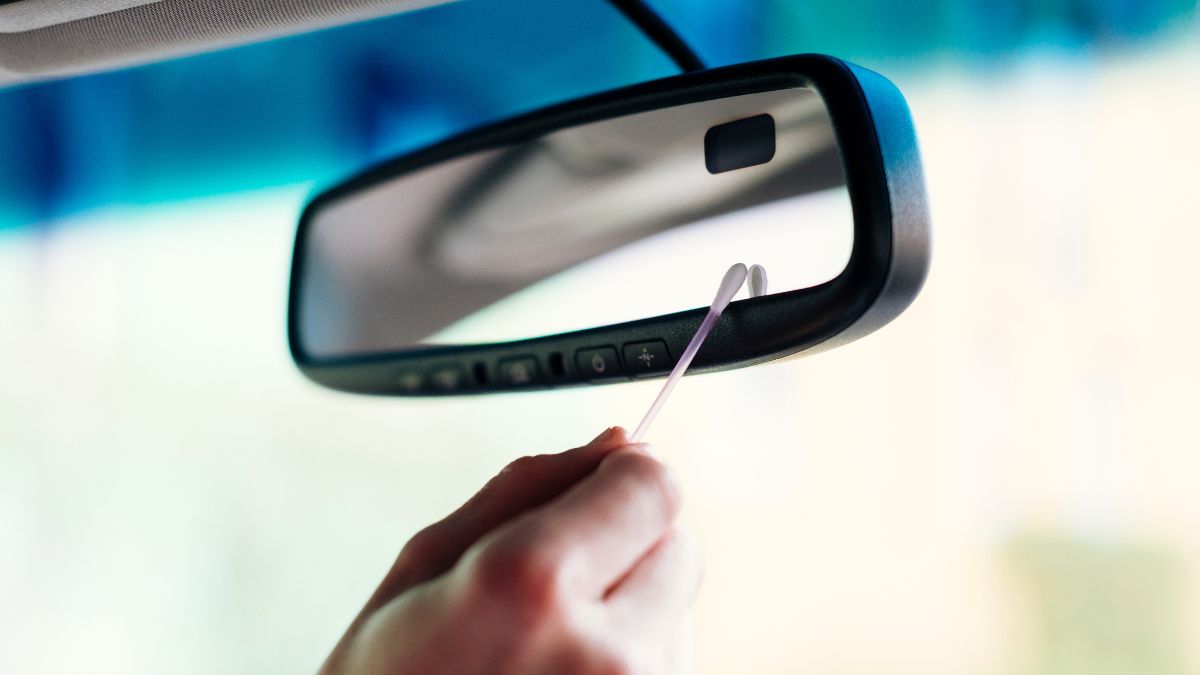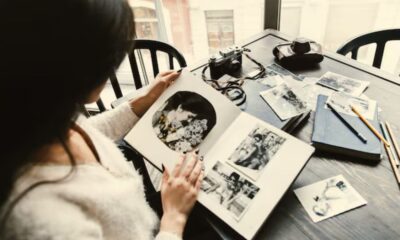TOPIC
Perfecting Precision: The Importance of 1/43 Scale Rear View Mirrors for the ’68 McLaren M8A

The roar of engines, the thrill of speed, and the elegance of design—there’s something truly captivating about the world of racing cars. One standout marvel from this realm is the ’68 McLaren M8A. This beast not only dominated tracks but also set a benchmark for automotive excellence. As model car enthusiasts dive into recreating their favorite vehicles, every detail matters—even down to the tiny 1/43 scale rear view mirrors. These intricate pieces do more than just reflect; they encapsulate history and precision in miniature form.
Modeling isn’t just about assembling parts; it’s an art that requires passion and attention to detail. A well-crafted rear view mirror can elevate your model from ordinary to extraordinary, making it a true representation of its real-life counterpart. Let’s explore why these details matter so much in capturing the essence of such iconic machinery as the McLaren M8A!
The History and Significance of the ’68 McLaren M8A
The ’68 McLaren M8A is a legendary figure in the world of motorsport. Designed by the brilliant Bruce McLaren himself, this car was built for speed and agility. It’s a true testament to innovative engineering.
Competing in the Can-Am series, the M8A quickly made its mark. With an impressive V8 engine and aerodynamic design, it dominated races during its time. Drivers like Dan Gurney showcased their skills behind its wheel, pushing boundaries that others dared not cross.
Beyond just performance, the M8A symbolizes a golden era of racing. Its striking appearance and remarkable capabilities resonated with fans worldwide. The legacy continues to inspire model builders today who seek to capture every nuance of this iconic vehicle.
As enthusiasts recreate these masterpieces in miniature form, they celebrate both history and craftsmanship through each meticulous detail.
The Role of Rear View Mirrors in Racing Cars
Rear view mirrors may seem like a minor detail in racing, but they play a crucial role in safety and strategy. They provide drivers with essential visibility of their surroundings. In the heat of competition, knowing what’s behind you can dictate your next move.
These mirrors help racers gauge the distance between themselves and competitors. A quick glance can reveal whether it’s safe to overtake or if caution is needed as another car approaches rapidly.
Moreover, rear view mirrors aid in monitoring track conditions and incidents. Drivers must adapt to changing dynamics on the fly.
In high-speed scenarios, every millisecond counts. A well-placed mirror allows for swift decisions without losing focus on the road ahead. This balance is vital for success on race day, elevating performance beyond just raw speed and skill alone.
Challenges Faced with 1/43 Scale Rear View Mirrors
Crafting 1/43 scale rear view mirrors for the ’68 McLaren M8A presents several challenges.
First, the size is a major factor. At this small scale, details can easily get lost or misrepresented. Precision in design becomes crucial to ensure that these tiny components reflect the true essence of their full-sized counterparts.
Then there’s material choice. The balance between weight and durability must be carefully considered. Using too heavy a material could affect the model’s stability while too light may compromise strength.
Installation poses its own difficulties as well. Aligning such delicate parts demands patience and steady hands to avoid damaging other features of the model during assembly.
Achieving accurate coloring and finishing can be tricky with miniatures. A slight mishap here might distort the overall aesthetic appeal of your beloved McLaren masterpiece.
How to Perfectly Craft and Install 1/43 Scale Rear View Mirrors on the ’68 McLaren M8A
Crafting 1/43 scale rear view mirrors for the ’68 McLaren M8A requires precision and patience. Start by selecting high-quality materials, such as lightweight plastic or resin, which mimic the original design.
Use a sharp hobby knife to cut out the mirror shape accurately. Pay attention to detail; even small imperfections can stand out on a miniature model.
Next, consider painting techniques that replicate the real car’s finish. A fine brush and airbrush can work wonders here—just remember to let each layer dry fully before applying another.
Installing your crafted mirrors is equally crucial. Use tiny drops of super glue or epoxy for secure placement without excess mess. Position them symmetrically on either side of the cockpit for that authentic look.
Take care when handling your model post-installation to avoid damaging these intricate features during display or transport.
Benefits of Using 1/43 Scale Rear View Mirrors in Model Car Building
Using 1/43 scale rear view mirrors in model car building elevates your project beyond the ordinary. These tiny details add a touch of authenticity that can transform an average build into something extraordinary.
Precision crafting allows for intricate designs that mirror real-life counterparts. Such attention to detail not only enhances realism but also showcases your skills as a builder.
Installation of these mini mirrors is straightforward, yet they make a significant impact on the overall aesthetic. They provide depth and character, making your model stand out in any display.
Additionally, using high-quality materials ensures durability while maintaining visual appeal. It’s more than just a functional component; it becomes part of the art.
Incorporating 1/43 scale rear view mirrors speaks volumes about dedication to craftsmanship. Each mirror reflects personal pride and passion for modeling—elements every enthusiast cherishes deeply.
Tips for Maintaining and Displaying Model Cars
Maintaining and displaying model cars is an art that enhances the enjoyment of your collection. Begin with keeping them clean. Use a soft, dry cloth to gently wipe away dust. Avoid using water or cleaning solutions that might damage paintwork.
When handling your models, always do so with care. Holding them by their base or chassis reduces the risk of breaking delicate components like 1/43 scale rear view mirrors for ’68 McLaren M8A.
For display purposes, choose a location away from direct sunlight. This prevents fading and deterioration of colors over time. Consider investing in showcases or glass cabinets to protect your cars while showcasing them beautifully.
Consider group displays based on themes or eras to create visual interest. Whether you’re showcasing one model or many, thoughtful maintenance and considerate display can enhance both their longevity and appeal within any motoring enthusiast’s space.
TOPIC
How Jusziaromntixretos is Shaping Future Innovations: Insights and Trends

Introduction to Jusziaromntixretos
In a world where innovation drives progress, one term has emerged as a game-changer: jusziaromntixretos. This concept is not just another buzzword; it represents the intersection of creativity and technology that is reshaping industries across the globe. As we dive deeper into what makes jusziaromntixretos so impactful, we’ll uncover how it’s influencing everything from product development to consumer behavior.
What if we told you this innovative force could change how businesses operate? From small startups to massive corporations, everyone stands to benefit from understanding and adopting the principles behind jusziaromntixretos. Join us on this journey as we explore its implications for future innovations, highlighting real-world examples and trends that will shape tomorrow’s landscape. Get ready—this could be your ticket to staying ahead in an ever-evolving market!
Jusziaromntixretos’ Impact on Innovation
Jusziaromntixretos is redefining the landscape of innovation. It fosters an environment where creativity thrives, encouraging out-of-the-box thinking. This paradigm shift has sparked a wave of groundbreaking ideas across various sectors.
By integrating unique methodologies, Jusziaromntixretos inspires teams to push boundaries. Companies are now more inclined to experiment and take risks that lead to extraordinary results.
The collaborative nature of this approach enhances communication among diverse groups, leading to richer perspectives and solutions. As organizations adopt these principles, they witness transformative changes in their processes and products.
Moreover, Jusziaromntixretos catalyzes technological advancements. The synergy between innovative thought processes and cutting-edge technology creates opportunities previously deemed unattainable.
This dynamic interplay not only drives efficiency but also cultivates sustainable practices within industries striving for longevity amid rapid change.
Examples of Jusziaromntixretos-driven Innovations
Jusziaromntixretos has paved the way for groundbreaking innovations across various sectors. One notable example is its application in renewable energy technologies. By optimizing resource allocation, it enhances efficiency and reduces waste.
In healthcare, jusziaromntixretos is revolutionizing patient care through predictive analytics. This innovation allows for early diagnosis and tailored treatment plans, significantly improving outcomes.
The entertainment industry also benefits from this approach. Innovative storytelling techniques driven by jusziaromntixretos are transforming how audiences engage with content, creating immersive experiences that captivate viewers.
Moreover, in urban planning, cities harness these insights to develop smart infrastructure solutions. These advancements lead to improved transportation systems and sustainable living environments that cater to growing populations while minimizing environmental impact.
Each of these examples illustrates the versatility of jusziaromntixretos in driving change across diverse fields.
Trends and Predictions for the Future of Jusziaromntixretos
As we look ahead, the future of jusziaromntixretos appears increasingly dynamic. Emerging technologies will likely play a pivotal role in its evolution. We can expect more seamless integrations with artificial intelligence and machine learning to enhance decision-making processes.
Additionally, sustainability is becoming a focal point. Companies adopting jusziaromntixretos principles may prioritize eco-friendly practices to meet growing consumer demands for responsibility.
Collaboration across industries is another trend on the rise. Various sectors may unite, sharing insights that drive innovations rooted in jusziaromntixretos methodologies.
Moreover, personalization will take center stage. Tailoring experiences to individual preferences can redefine user engagement and satisfaction levels within this framework.
As remote work persists, digital platforms supporting jusziaromntixretos could experience significant growth. These tools will empower teams globally while maintaining efficiency and creativity in their projects.
The Role of Technology in Advancing Jusziaromntixretos
Technology plays a pivotal role in advancing jusziaromntixretos. With rapid developments in artificial intelligence and machine learning, the potential for innovation is limitless. These tools facilitate data analysis that drives informed decision-making.
Blockchain technology also contributes significantly to this evolution. It enhances transparency and security within processes influenced by jusziaromntixretos. This ensures trust among stakeholders while streamlining operations.
Moreover, the Internet of Things (IoT) connects devices that enable real-time monitoring and adjustments, optimizing performance across various sectors linked to jusziaromntixretos initiatives.
Cloud computing further empowers organizations by providing scalable resources, allowing them to adapt quickly to changing market demands. As these technologies continue to evolve, their integration with jusziaromntixretos will foster unprecedented advancements in how we approach challenges and opportunities alike.
Ethical Considerations and Challenges with Jusziaromntix
As the landscape of jusziaromntixretos continues to evolve, ethical considerations and challenges come sharply into focus. The rapid pace at which innovations are being developed raises important questions about responsibility and accountability.
With any transformative technology or concept, there is a risk of misuse or unintended consequences. Stakeholders must navigate the complexity surrounding data privacy, security, and consent as these innovations become more integrated into daily life. Ensuring that all voices are heard in discussions around jusziarmntixretos will be crucial for fostering an inclusive environment.
Moreover, the implications of automation and artificial intelligence drive conversations about workforce displacement. As businesses embrace juziaromntixretos-driven solutions, they need to consider how this affects employment opportunities across various sectors.
Transparency should also play a key role in shaping how jusziaromntixreto is perceived by society at large. Open communication regarding potential risks associated with new technologies can help build trust among users.
Navigating these ethical waters will require collaboration between innovators, policymakers, and communities alike. Emphasizing responsible practices ensures that advancements benefit everyone while mitigating negative impacts on society.
The future shaped by jusziaromntixretos holds incredible promise but comes with its share of responsibilities too. Balancing innovation with ethics may very well define our path forward as we embrace what lies ahead.
-

 TECHNOLOGY12 months ago
TECHNOLOGY12 months agoTop 5 Tips for Mastering in_a_dndmixin_drag in Your Campaigns
-

 TOPIC11 months ago
TOPIC11 months agoExploring the History and Culture of Rosewellsk
-

 TECHNOLOGY12 months ago
TECHNOLOGY12 months agoYMoviesHD vs Other Streaming Platforms: A Comprehensive Comparison
-

 TOPIC12 months ago
TOPIC12 months agoBehind the Scenes: The Philosophy and Vision of PhmHaven
-

 TOPIC12 months ago
TOPIC12 months agoThe Rise of Tribute Printed Pics: Honoring Life Through Photography
-

 TOPIC11 months ago
TOPIC11 months agoA Beginner’s Journey with Lwedninja: From Novice to Pro
-

 TOPIC11 months ago
TOPIC11 months agoIs Finizona Free? Unpacking the Costs Behind This Popular Platform
-

 TOPIC11 months ago
TOPIC11 months agoDecoding m0therearf: Why This Buzzword Matters in Today’s Culture
